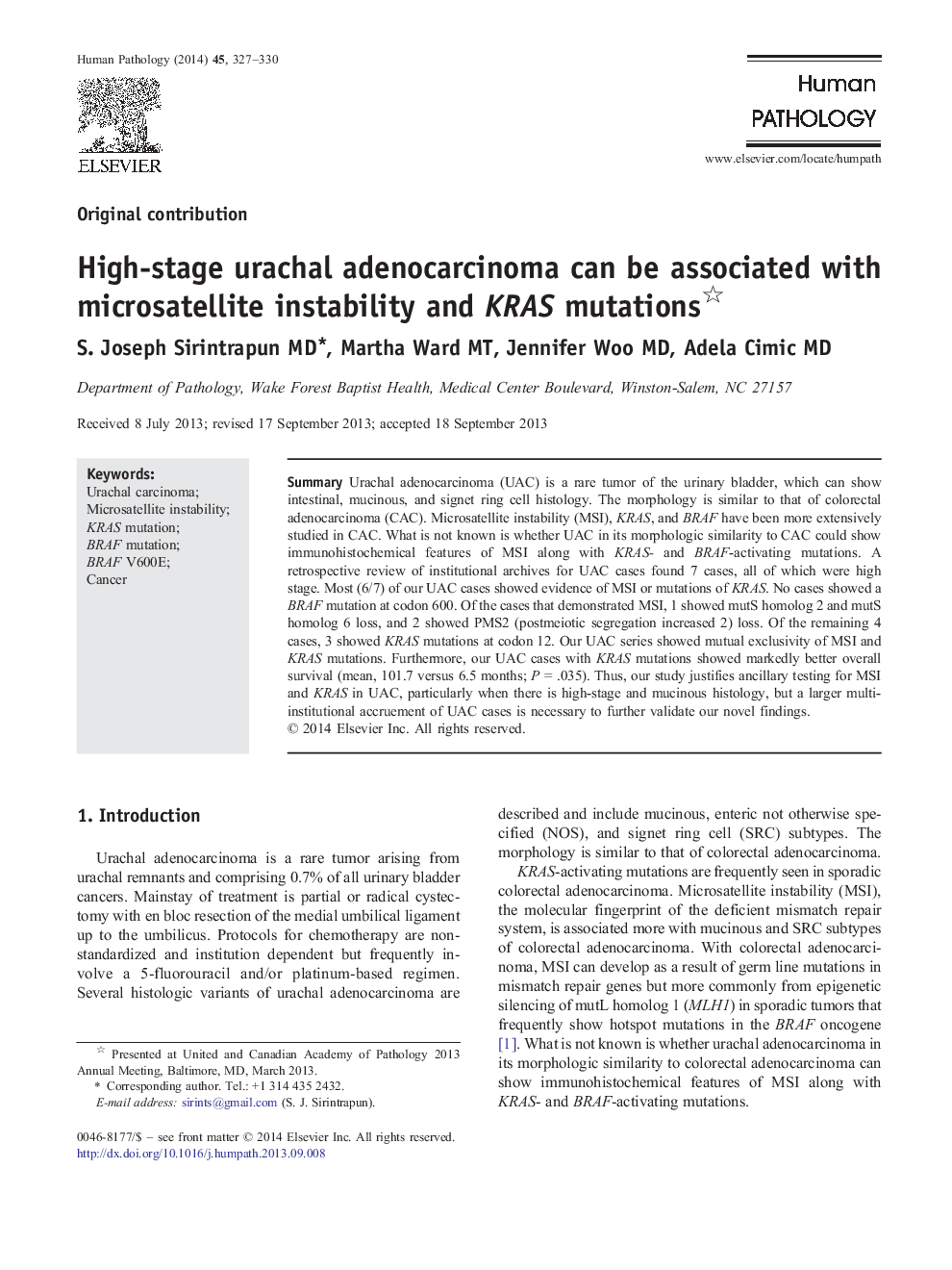| Article ID | Journal | Published Year | Pages | File Type |
|---|---|---|---|---|
| 4133257 | Human Pathology | 2014 | 4 Pages |
SummaryUrachal adenocarcinoma (UAC) is a rare tumor of the urinary bladder, which can show intestinal, mucinous, and signet ring cell histology. The morphology is similar to that of colorectal adenocarcinoma (CAC). Microsatellite instability (MSI), KRAS, and BRAF have been more extensively studied in CAC. What is not known is whether UAC in its morphologic similarity to CAC could show immunohistochemical features of MSI along with KRAS- and BRAF-activating mutations. A retrospective review of institutional archives for UAC cases found 7 cases, all of which were high stage. Most (6/7) of our UAC cases showed evidence of MSI or mutations of KRAS. No cases showed a BRAF mutation at codon 600. Of the cases that demonstrated MSI, 1 showed mutS homolog 2 and mutS homolog 6 loss, and 2 showed PMS2 (postmeiotic segregation increased 2) loss. Of the remaining 4 cases, 3 showed KRAS mutations at codon 12. Our UAC series showed mutual exclusivity of MSI and KRAS mutations. Furthermore, our UAC cases with KRAS mutations showed markedly better overall survival (mean, 101.7 versus 6.5 months; P = .035). Thus, our study justifies ancillary testing for MSI and KRAS in UAC, particularly when there is high-stage and mucinous histology, but a larger multi-institutional accruement of UAC cases is necessary to further validate our novel findings.
